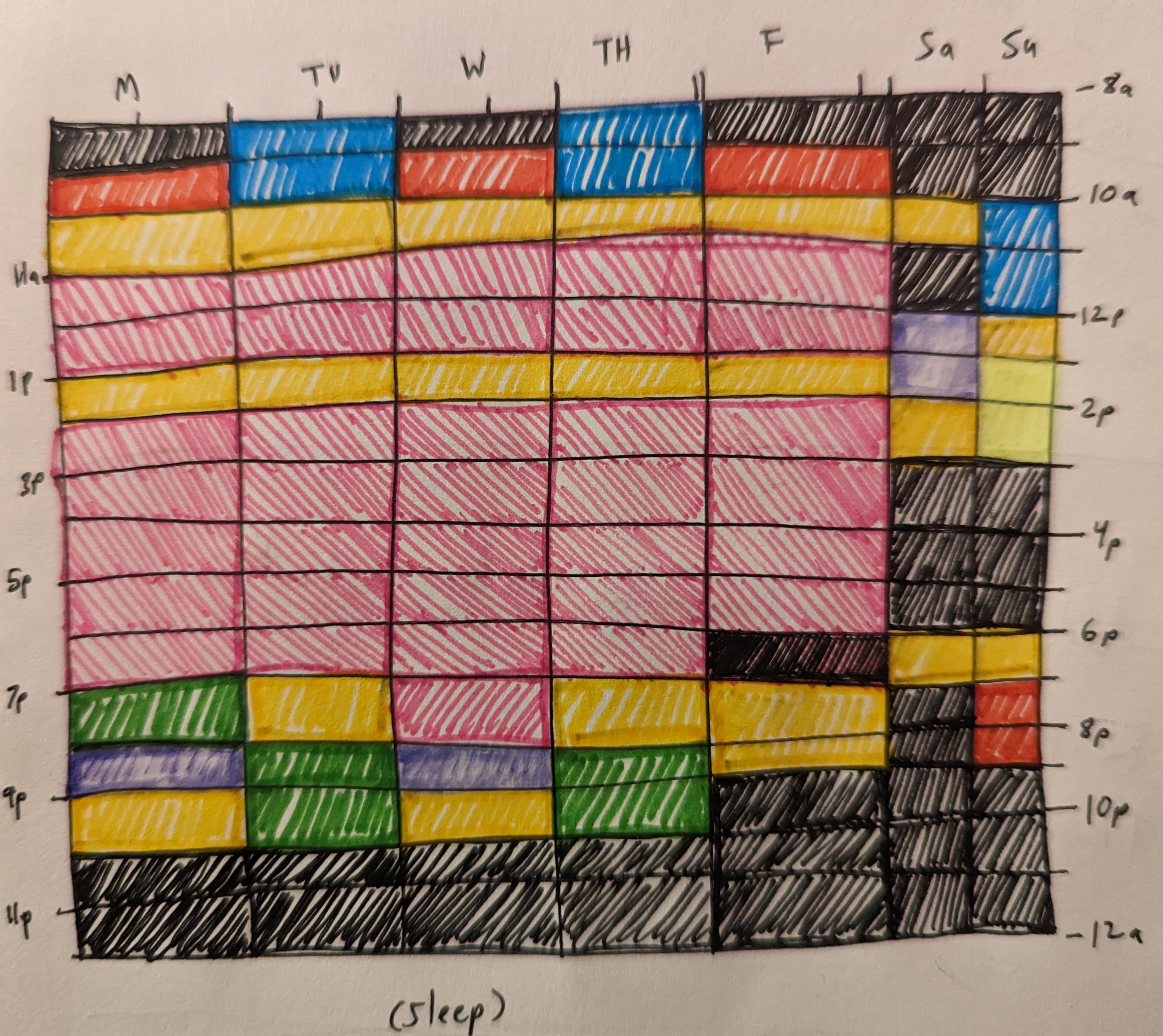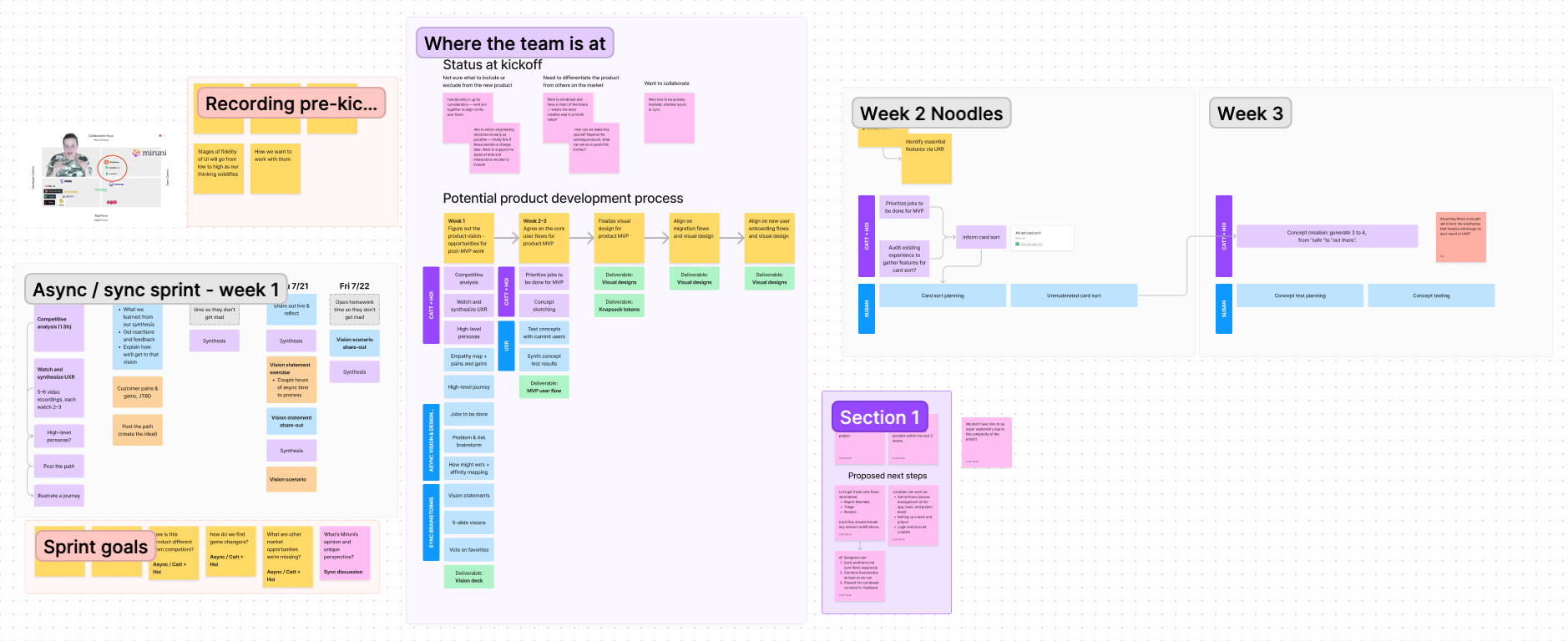Turning remote work cons into advantages
Managing a remote design team comes with many benefits. As someone who has worked remotely for three years and on a hybrid team for a large portion of my career, I value the role that remote work plays in designing more inclusive experiences. Transitioning from in-person work to a distributed style can reveal downsides that sometimes scare people away.
In this article, I’ll share ways to reframe common remote work challenges as advantages. With some intention and effort, we can create effective work environments for remote design teams. As a disclaimer: I’m trying to be less perfectionist and more experimental, so I played with ChatGPT in the process of writing this post. All of what you’ll read is my perspective, although I used the AI service to refine my thinking. I’ve edited everything for clarity, personality, and cohesion. Let’s jump in!
No boundaries → More agency
One challenge of remote work is the perception that it leads to a lack of boundaries. When you go into an office every weekday, your life is heavily structured. Employers often set working hours and may even tell you when to eat meals. This removes the need to decide for yourself, which can be very convenient but also very destabilizing if you make the shift to remote work without planning.
Turn this challenge into a positive by recognizing that remote work allows you to design your schedule as you see fit. With some intention, controlling when and how you work can lead to a better work-life balance. Designers are creative people, and having schedule flexibility can give you the space to live your most fulfilling life! You can prioritize your personal needs and responsibilities, such as caring for loved ones or pursuing hobbies, without sacrificing your professional goals.
I personally had a moment where my workdays were blending into my personal life. At night, I would close my computer and feel drained. I wasn’t great at listening to my partner because I was so tired from working. That was a sign to revamp how I use my time.
 My new remote work schedule starts and ends slightly later, which allows me to start my day with other fun activities.
My new remote work schedule starts and ends slightly later, which allows me to start my day with other fun activities.
After listing out all my interests, I drew a calendar and planned a new schedule that better suited my needs. While this new schedule doesn’t quite follow the normal 9-to-5 or 10-to-6, I’m now much happier and have more time to focus on my personal interests while delivering on my responsibilities at work. This has made me a better design leader and partner.
A disconnected team → A more diverse team that values their time together
When you work remotely, designers at your company might live all over the country—or even the world! One obvious positive of this challenge is that you can hire great talent without forcing people to relocate. The resulting diversity of perspectives and backgrounds leads to more innovation than companies that are in one or more of a few major cities.
Another challenge of distributed teams is that you can miss out on the kind of spontaneous, face-to-face interactions people need to feel like part of a community. That’s a sign to be more intentional about creating meaningful moments of overlap. A little bit of extra planning can help your team connect more regularly than the occasional in-person offsite.
 The sample Zelda Maker level follows the layout of a floor in Figma’s office.
The sample Zelda Maker level follows the layout of a floor in Figma’s office.
For example, I recently organized a social half-hour where my team and I built a Zelda level in Figma using the Zelda Maker plugin, then played our creation. I was nervous to put time on the calendar just to hang out, but we ended up laughing a bunch and connecting in a very memorable way. Plus, some of the folks who previously expressed an interest in game development got to try their hand at level design!
No physical space to customize → Curated online spaces
Designers often dream of having a customizable section of the office just for coworking with other creatives. Without an office, you don’t a have physical space to curate. This can cause teammates to feel disconnected and lack a sense of community. Online team spaces can combat feelings of loneliness.
Without the constraints of a physical office space, you have the flexibility to design and customize your digital environments to best suit your team’s needs and goals. Use virtual collaboration tools and platforms that foster communication and teamwork to create a sense of community. Products like Slack, mmhmm, FigJam, and Bramble can give you the sense of being in a community even though you live separately.
Awkward video calls → More interesting meeting formats with better moderation and documentation
The awkwardness of video calls is a big hurdle for many who adjusting to remote work life. Live design crits are usually full of conversation, and the natural cues of an in-person meeting translate poorly to remote meetings. But in-person meetings come with plenty of communication challenges of their own such as imbalanced communication, and remote meetings can solve them!
By being in a remote setting, you have the opportunity to moderate meetings more effectively and ensure that everyone has a chance to participate. Instead of relying solely on uncoordinated video calls, add thoughtful structure to your group conversations. Use the toolkit of your virtual meeting software to its fullest by encouraging people to type thoughts or raise their hands when they have an opinion to share. Incorporate different meeting formats using virtual whiteboarding tools like FigJam and teambuilding platforms like Gatheround.
 A FigJam workspace my report and I used to remotely plan a project.
A FigJam workspace my report and I used to remotely plan a project.
Remote meetings and workshops come with more efficient documentation. You can use transcription tools to quickly record meeting notes for access later. Virtual whiteboarding tools prevent the need for photos of workshop sticky notes, too. All of this intuitive documentation can result in time saved to do what matters most: build great things and connect with your design team!
I’ve also heard people say remote workshops feel less organic, inspiring, and creative than in-person ones. This isn’t always true; remote workshops can be just as effective if they are run with proper consideration and structure. Try some of the tips I outlined in my article about this exact topic if you’d like to create the memorable experiences you’ve been missing!
That’s it!
Remote work isn’t easy, and it requires a level of intentionality that many don’t expect. Intentional design leaders who overcome the most common challenges can obtain all the benefits of working with an amazing team of distributed individuals. A reasonable amount of effort can pay major dividends: you’ll have a more diverse, talented, and connected team of designers who are more fulfilled inside and outside of working hours.
Upcoming talks
-
Staff designer: Grow, influence, and lead as an individual contributor
At some point in your career, you'll likely have to choose between senior individual contributor (IC) and design management roles. But what if you don't want to manage others? What if you’d rather continue as an expert contributor? In this talk, we’ll take a deep dive into staff/principal designer roles—a combination of team leadership and in-the-pixels design work—all without any direct people management. Learn how you can advocate for, grow into, and succeed in such IC leadership roles.
Want to talk?
Got feedback, looking to suggest a future writing topic, or want to invite me to speak at your organization? Send me a message and I'll get back to you as soon as possible!